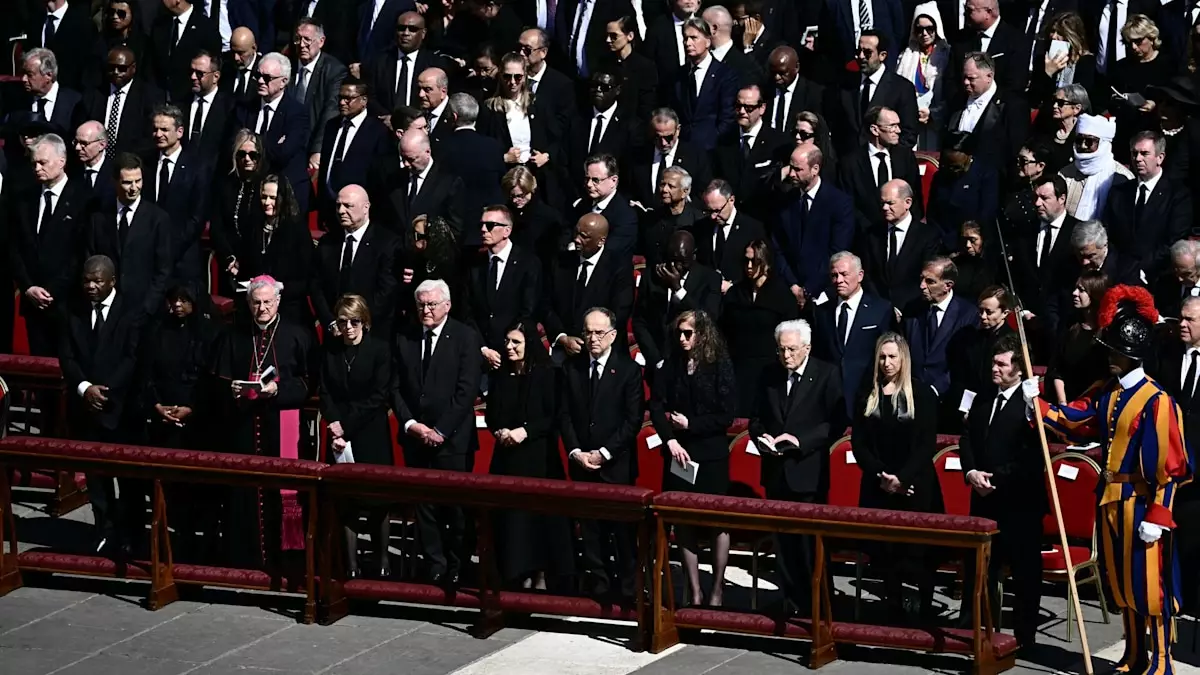Recent observations during Pope Francis’ funeral have sparked intrigue among royal observers and political analysts alike. The unexpected placement of Prince William and UK Prime Minister Sir Keir Starmer amidst an array of world leaders raised eyebrows and prompted discussions about the complex world of diplomatic seating arrangements. While the event featured notable figures such as former US President Donald Trump and European royalty, including Queen Mary of Denmark, Prince William found himself situated several rows back, intermixed with members of the Jordanian royal family. Such arrangements were not arbitrary but rather the result of a meticulously designed plan aimed at appeasing the powerful egos present.
At the heart of this seating arrangement lies an intriguing protocol. The strategy, articulated by Cardinal Vincent Nichols, leader of Catholics in England and Wales, revolved around alphabetical positioning. The decision to use French, often viewed as the language of diplomacy, flipped the expectations of many English speakers. This decision was not simply a minor detail—it represented a conscious choice of protocol that reflects the complexities of international relations. The design of the seating hierarchy, influenced by diplomatic customs, served a greater function than mere positioning: it was a deft maneuver to manage the perceptions and temperaments of world leaders.
Why Alphabetical Order Matters
The choice to arrange dignitaries alphabetically in French underscored an understanding of cultural and diplomatic hierarchies. Cardinal Nichols aptly noted that the funeral bore all the hallmarks of a “masterpiece of stage management,” with organizers leveraging their historical expertise in managing high-profile events. The event’s seating plan went beyond a mere logistics exercise; it was a carefully crafted narrative aimed at balancing various national egos.
For example, while Argentina holds a special place as Pope Francis’ birthplace, Italy’s proximity as the host nation highlighted its significance. Therefore, the arrangement of heads of state, monarchs, and government officials in this manner reflects a nuanced understanding of inter-country relationships and historical allegiances. This is vital in a setting where tensions often run high, and every detail can be interpreted as a slight or an honor.
The Prince’s Role and Modern Traditions
The decision for Prince William to represent King Charles III at the funeral, a role traditionally held by the reigning monarch, aligns with evolving royal protocols. It showcases the monarchy’s adaptability in a modern context, recognizing that participation in significant events like funerals is not just a ceremonial duty but a gesture of goodwill and respect.
Historically, this approach to participation was noted when Charles attended the funeral of Pope John Paul II on behalf of his mother, Elizabeth II. Such decisions highlight the ongoing evolution within royal traditions, where delegated participation to a future monarch serves to enhance connections with other faith leaders and countries.
The absence of the Princess of Wales from such a prominent occasion was also telling and potentially indicative of a shift in royal dynamics. Family obligations came into play here, suggesting that even within the royal family, modern commitments take precedence over the rigid observance of traditional expectations.
Historical Context: The Influence of Rome
Cardinal Nichols added a significant dimension to the discourse by referencing the historical acumen of the Roman clergy. He pointed out that the Holy See has mastered the art of managing high-stakes events, a skill honed over centuries. This expertise is particularly relevant in the context of global leadership, where perception and public relations often guide actions and decisions.
The Roman Catholic Church has a storied history of navigating complex political landscapes, demonstrating that diplomacy is not merely a matter of negotiation but a delicate dance requiring finesse and insight into human nature. In a world rife with conflict and competition, the ability to maintain decorum and civility among leaders reflects a deeper understanding of governance and leadership in religious and state matters.
Through these arrangements, the Vatican not only solidifies its influence but exemplifies how diplomacy can be both an art and a necessity. Whether or not one agrees with the luxurious complexity of it, the artful handling of such situations reflects a commitment to upholding dignity and respect, balancing egos while establishing a shared sense of purpose in grief and commemoration.

